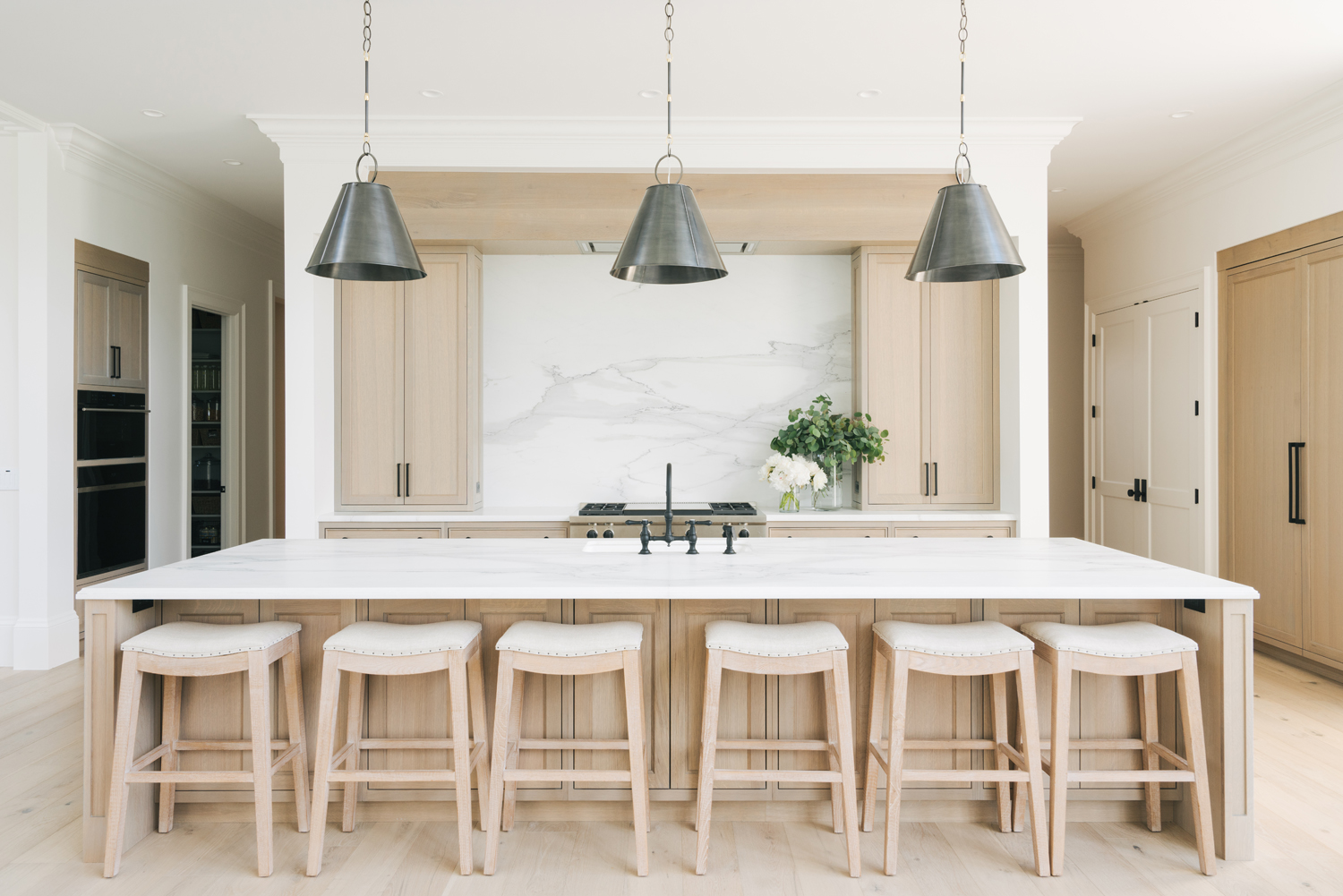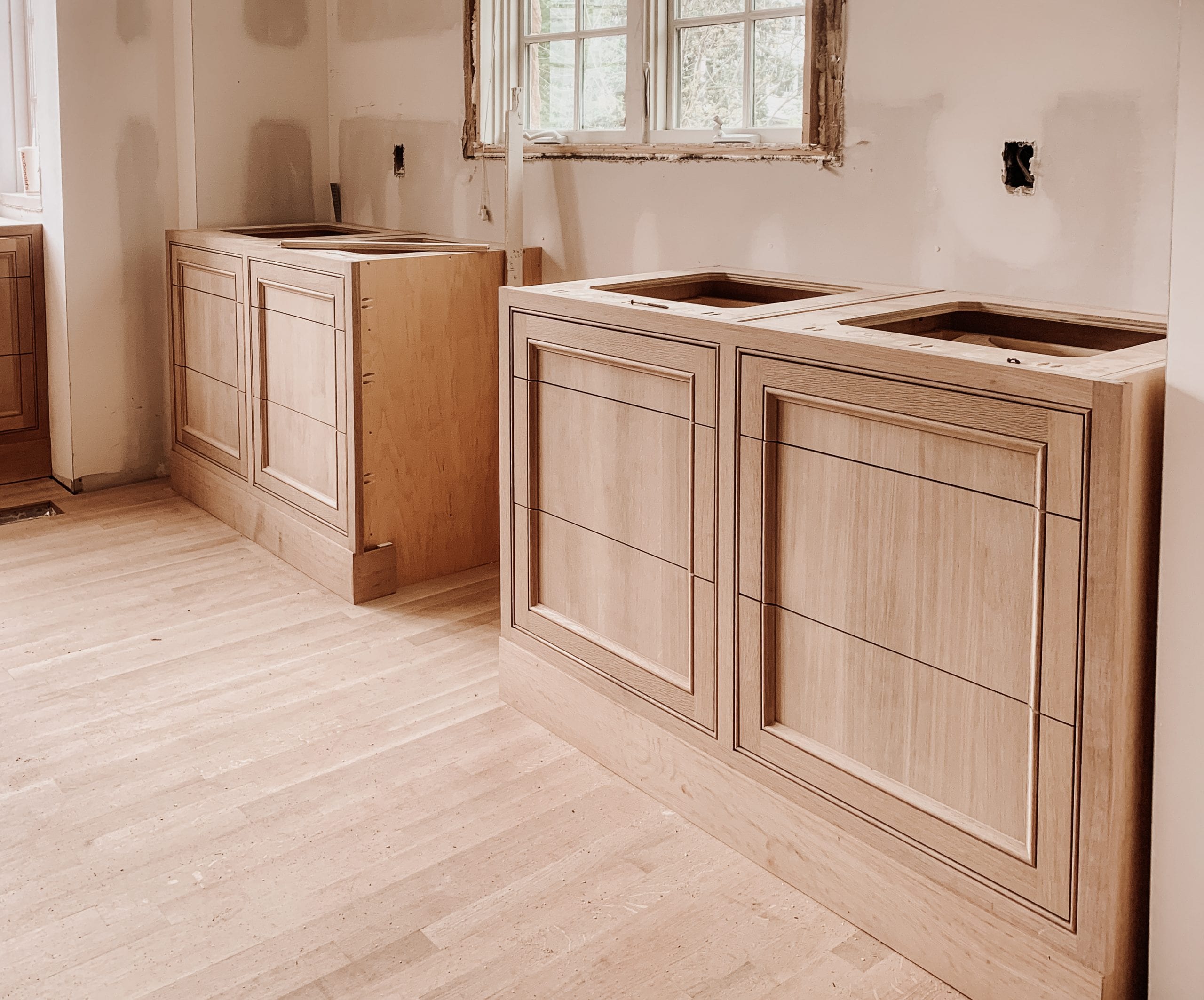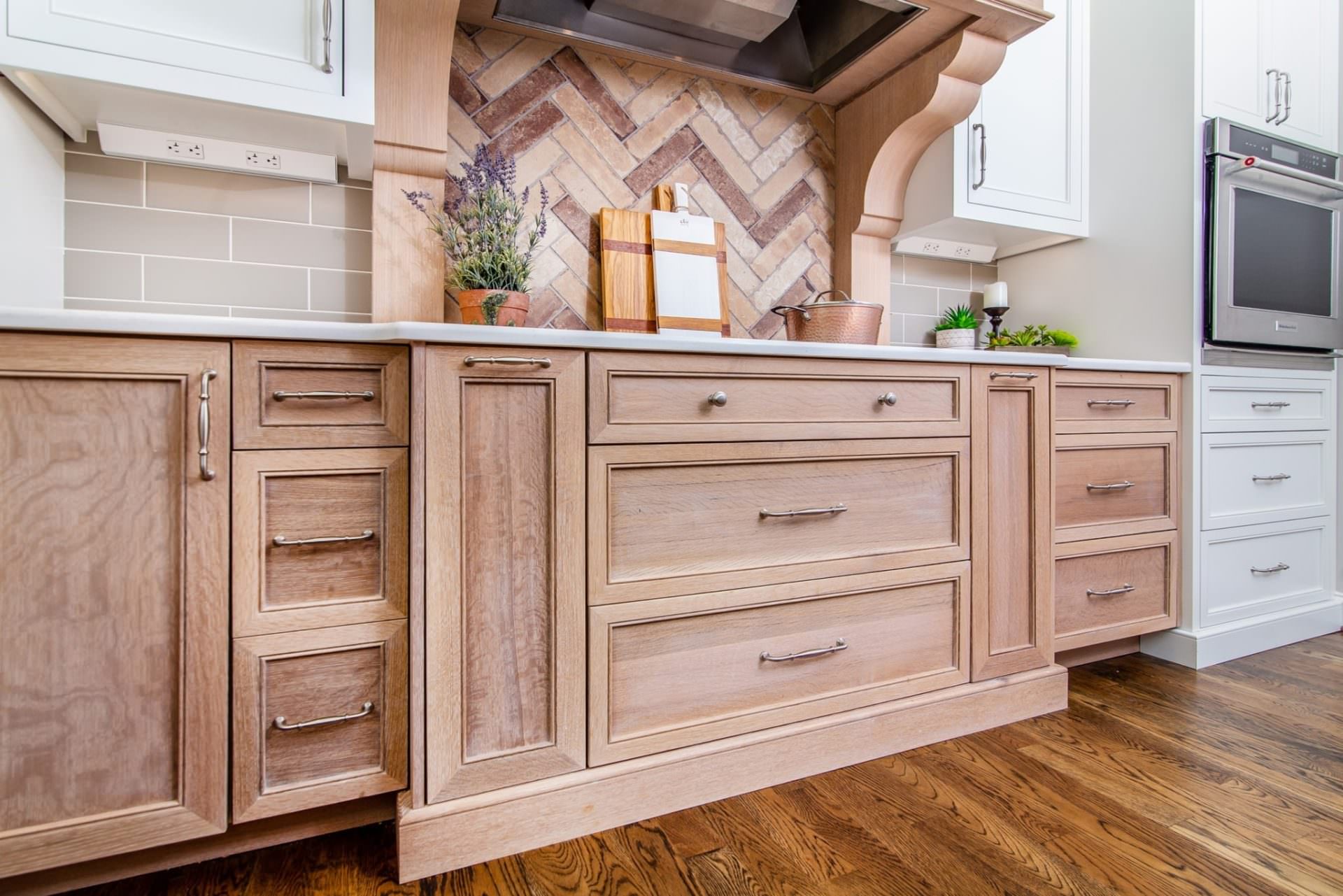White Oak Kitchen Cabinet Aesthetics & Design: White Oak Kitchen Cabinets

Yo, let’s talk about white oak kitchen cabinets – proper statement pieces for your crib. Forget bog-standard units, these are next level. We’re diving deep into the visuals, the different styles, and how they smash it against other wood choices.
White Oak’s Visual Appeal: Grain & Colour
White oak’s got this raw, natural vibe. The grain patterns are like, seriously unique – you’ll see prominent, open pores and a distinctive figuring that adds character. The colour itself varies from a light, almost creamy tone to a richer, golden hue, depending on the cut and finish. Think of it like this: you’ve got your natural finish, showing off all that gorgeous grain; then you’ve got stained options, adding depth and warmth, maybe going for a darker, more rustic look; and finally, painted white oak – a total game changer, giving you a clean, modern aesthetic while still retaining that subtle oak texture underneath.
Comparing White Oak with Other Wood Choices
Right, let’s compare white oak to other popular choices. Each wood has its own unique vibe, so the best choice depends entirely on your style.
| Wood Type | Colour | Grain | Style Suitability |
|---|---|---|---|
| White Oak | Light creamy to golden brown | Prominent, open pores, distinctive figuring | Modern, traditional, farmhouse |
| Cherry | Rich reddish-brown | Fine, even grain | Traditional, transitional |
| Maple | Light, almost white to pale yellow | Fine, uniform grain | Modern, contemporary |
| Walnut | Dark brown to almost black | Bold, dramatic grain | Modern, traditional, eclectic |
Kitchen Design Layouts Featuring White Oak Cabinets
Here’s where we get creative. Three different kitchen styles, all rocking white oak cabinets.
Modern Kitchen with White Oak Cabinets
Imagine this: sleek, minimalist lines. The cabinets are painted a crisp white, showcasing the subtle texture of the oak underneath. The hardware is brushed nickel, simple and understated. The countertops? A smooth, polished concrete – that industrial-chic vibe. It’s clean, it’s sophisticated, it’s pure fire.
Traditional Kitchen with White Oak Cabinets
This time, we’re going for warmth and richness. The white oak cabinets are stained a medium brown, highlighting the natural grain. The hardware is antique brass, adding a touch of old-world charm. The countertops? A classic marble, maybe a creamy Carrara or a dramatic Calacatta – pure elegance.
Farmhouse Kitchen with White Oak Cabinets
Think rustic charm meets modern functionality. The white oak cabinets are painted a soft white or left with a natural finish, showcasing the wood’s natural beauty. The hardware is black, adding a touch of contrast. The countertops? A butcher block countertop, offering both practicality and style. It’s cosy, it’s inviting, it’s the perfect blend of old and new.
White Oak Kitchen Cabinet Functionality & Durability

Yo, let’s get real about these white oak kitchen cabinets. They ain’t just pretty faces; they’re built to last, bringing serious functionality and resilience to your kitchen game. We’re talking about a solid investment that’ll stand the test of time, resisting the daily grind and looking fly for years to come. Forget flimsy MDF – this is the real deal.
White oak is renowned for its strength and durability. It’s naturally resistant to dents and scratches, making it ideal for a high-traffic area like a kitchen. The tight grain also means it’s less likely to absorb spills and stains, keeping your cabinets looking fresh. Proper maintenance is key, of course, but white oak’s inherent toughness means you won’t be constantly fretting about every little mishap. Think of it as the heavyweight champion of kitchen cabinet materials.
White Oak Cabinet Construction Methods: Framed vs. Frameless, White oak kitchen cabinets
The way your cabinets are built significantly impacts their durability and functionality. Choosing between framed and frameless designs is a big decision, influencing both aesthetics and longevity.
- Framed Cabinets: These classic cabinets feature a face frame surrounding the cabinet box. Pros include added strength and stability, making them ideal for heavier doors and drawers. They often have a more traditional look. Cons? They generally offer less storage space within the cabinet due to the frame’s width. They can also be more expensive to produce.
- Frameless Cabinets: Frameless cabinets, also known as European-style cabinets, lack the face frame. The doors and drawers are mounted directly onto the cabinet box. Pros? They maximise interior space, offering a cleaner, more modern aesthetic. They are often easier to clean due to the lack of extra framework. Cons? They might require more precise installation and the cabinet box itself needs to be robust to maintain structural integrity.
White Oak Cabinet Care and Maintenance
Keeping your white oak cabinets looking fresh is easier than you think. Regular cleaning is crucial, preventing grime buildup and maintaining their pristine condition.
Avoid harsh chemicals and abrasive cleaners, as these can damage the wood’s finish. A simple solution of mild dish soap and warm water, applied with a soft cloth, is usually sufficient for regular cleaning. For stubborn stains, a slightly damp cloth might do the trick. Always wipe dry immediately to prevent water damage. For more serious cleaning or to restore the shine, a specialized wood cleaner and polish designed for white oak is recommended. Regular dusting prevents dust from accumulating and scratching the surface. Avoid placing hot pots and pans directly on the cabinet doors or surfaces – use trivets or pot holders to protect the wood.
White Oak Kitchen Cabinet Cost & Selection

Right, so you’re thinking about splashing out on some seriously swish white oak kitchen cabinets, eh? Let’s get down to brass tacks and talk dosh. White oak ain’t cheap, but the quality and look are worth it for many. The price tag depends on a whole load of factors, from the size of your kitchen to the level of customisation you’re after.
The cost of white oak kitchen cabinets varies wildly, but generally, you’re looking at anywhere from £500 to upwards of £20,000 for a complete kitchen fit. A smaller kitchen with simpler, ready-to-assemble cabinets will be at the lower end, while a large kitchen with bespoke designs, intricate detailing, and a premium finish will be a lot more expensive. Think of it like this: a basic Ford Fiesta versus a souped-up Range Rover.
Factors Influencing White Oak Cabinet Prices
This ain’t rocket science, but there are key things that massively bump up the price. Understanding these will help you budget effectively and make informed choices.
| Factor | Description | Price Impact | Example |
|---|---|---|---|
| Wood Grade | The quality of the oak wood, ranging from clear (few imperfections) to rustic (lots of knots and character). | Clear grade is more expensive. | Clear grade oak will cost significantly more than rustic grade, reflecting its superior quality and appearance. |
| Cabinet Style | Simple shaker style versus intricate designs with raised panels, carvings, or mouldings. | Intricate styles cost more. | A plain shaker-style cabinet will be cheaper than one with elaborate carvings and detailed door panels. |
| Custom Features | Bespoke sizes, special finishes (like hand-rubbed), unique hardware, and internal features like pull-out drawers or spice racks. | Significantly increases cost. | Adding custom-sized cabinets to fit unusual spaces or incorporating high-end hardware will add to the overall expense. |
| Installation Costs | Labour charges for professional installation, including delivery and any necessary adjustments. | Varies based on location and installer. | Expect to pay more for installation in a city compared to a rural area, and more for complex installations. |
Selecting White Oak Kitchen Cabinets: A Step-by-Step Guide
Choosing your cabinets is a proper mission, so let’s break it down:
1. Measure Your Kitchen: Get accurate measurements of your kitchen space, including wall dimensions, window and door locations, and appliance placements. This is crucial for accurate cabinet planning.
2. Define Your Style: Decide on the overall aesthetic you want to achieve. Do you prefer a modern, traditional, or rustic look? Browse online resources and magazines for inspiration.
3. Set Your Budget: Determine a realistic budget for your cabinets, factoring in all costs, including the cabinets themselves, installation, and any additional features.
4. Choose Your Cabinets: Visit showrooms or browse online catalogs to explore different styles, finishes, and price points. Consider the wood grade, door styles, and hardware.
5. Work with Professionals: Consult with cabinet manufacturers or kitchen designers to discuss your requirements and get personalised advice. A good designer will help you optimise your space and select suitable cabinets within your budget.
6. Installation: Arrange for professional installation to ensure a high-quality, long-lasting result. Get quotes from multiple installers to compare prices and services.
